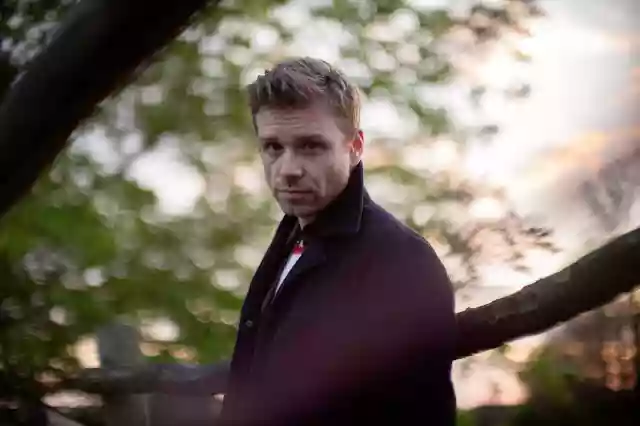- Call us: 01444 237070
- Contact Us
- Stores
- Sign In / Register
-
- Back
- Used Cameras
- Used Accessories
- Used Lenses
- Used Video
- Used Film Equipment
- Used Stock Alert
- Used Blank Test
- Sell or Part Exchange
- Used Clearance
- Recently Added Used Equipment
- Park Picks
- All Used Black Friday Deals
- Faulty
- Trade-In
- Blog
- New in
- Call us
- Contact us
- Stores
- Sign in
- Categories
- Tips & Inspiration
- Reviews
- News
- Events
- Features
- Buying Guides
- Competitions
Using the worlds fastest AF lens Canon 50mm 1.0

When we got word that our used department had a Canon EF 50mm f/1 lens in, we were literally buzzing with excitement. Just to reiterate that's an f/1.0 on 50mm. With autofocus. It's not often you get to see '1.0' on the display screen of your DSLR!
In fact, it's the first time we've had one in our used department, so we thought we'd take this chance to explore it further. Here are our pictures and review.
Note - All images shot at f/1.0!
Canon EF 50mm f/1 – a brief history
Produced between 1989 and 2000, it is now a collector’s item, fought over on eBay and much admired – and let’s be honest here – much debated, due to its numerous ‘characteristics’. More on those shortly!
There is no doubt that this was a statement lens from Canon, aimed at stamping their place at the top of the pro SLR market. Paired with the launch of their first professional autofocus body, the EOS 1, it caused waves within the camera market.

Incredibly, between 1989 and June 1993 the only options for Canon users looking for an autofocus 50mm lens were the entry level f/1.8 version or the top end f/1.0 model. The introduction of the f/1.4 version in 1993 opened up the range of choices; it arguably led to the f/1.0’s eventual cessation of production in 2000.
As an aside – this is understandable. We absolutely love the 50mm f/1.4, which can be picked up for circa £200* second hand – but check here for actual current prices.
How usable is the Canon 50mm f1?
We’re going to get straight to the point here. This lens is expensive, and on the technicalities, there is no denying there are many ‘characteristics’ that make it an awkward customer.
It’s actually quick to focus, but difficult to land. This is exacerbated when you consider the shallow plane of focus you are trying to land on your subject.

If you shoot it wide open (and why wouldn’t you – otherwise get a 50mm f/1.2) it’s generally soft, lacks contrast and shows fall off in the corners. These areas pick up at f/2.8… but obviously, that is not making the most of the lens.
It’s also heavy, although it undeniably feels like a premium lens. In look and feel, it is comparable to the Canon 85mm f/1.2 (MK ii) – the lens barrel is very similar indeed.
So, why would you want it?
Believe me, if you could, you would. And if you can, then do.
Yes, it gives you a limited and repeated look, which is soft, dreamy, and cinematic. The technicalities may not please those who prefer to study charts on optical performance, but in this writer’s view, any photographer who uses this would want one in their kitbox. It’s the closest we’ve come to finding a (non-Leica!) lens that offers ‘the Leica look’ – the colour tones are superb!
The fall off from the area of focus is gradual, and when this blends into the semi-vignette found in the corners, each shot has a unique and distinctive signature. It is, of course, subjective, but I’d take a slightly soft, dreamy look over clinical, but technically perfect results any day.

Bokeh - ‘Let the background melt away’
Ok, so we’ve kept the best until last. We’ve simply never seen the background (or foreground) melt away as you crank the aperture wider and wider. Let’s go as far as to say it’s the whole purpose of the lens.
This is also unique for a 50mm field of view. Yes – similar results* can be achieved with the 85mm at f1.2, but this is because of the extra compression gained from the focal length. *Let’s just caveat that of course this depends on your distance to your subject, and the distance between foreground / background.
And the ability to do this at 50mm really does set this lens apart. For portraits we actually found the focus to be reasonable, although you should be prepared to take a fair few images to make sure you nail the focus point.

Using the Canon 50mm EF 50mm f/1.0
We used this with a Canon 5d iii, using a focus selection point to try and nail the focus on the eye. At f/1.0, understandably the focal plane is very narrow. Even when the focus did land, it is still soft (wide open) – a 400% zoom in ‘post’ barely even shows eyelashes!
We shot as the sun was setting, and of course the wide aperture meant we were at risk of over-exposing. When the sun shone brightly, even with a shutter speed of 1/8000, our pictures overexposed!
 |
| The tones... The bokeh... |
Still, for all the challenges faced, we had a huge smile on our face the whole time! With a bit more practise we felt like the autofocus was friendly enough to use - and we would have like to try it out on a camera that offers focus peaking as well, to really hone in that narrow plane onto to our model's eye.
Overall, using this lens met, and in fact exceeded the ridiculously high expectations we had when we started shooting with it. The look the lens produces is unique, and from Canon’s vast network of EF lenses, only the 85mm at f/1.2 comes close.
At Park Cameras our range of used equipment is forever growing. Explore our range of used equipment.
All images by Ashley Laurence
Share this post:
By Park Cameras on 08/05/2019

Trade in your old equipment
Fast and easy trade in service ensures your old gear is collected efficiently and you are paid quickly! It's very simple to trade in your unwanted photography gear. Just head over to our dedicated Sell or Part Exchange page, fill out the details, and we'll get back to you with an offer for your old gear. Take the cash, or put it towards the cost of your new gear. It's up to you! Find out more
sign up to the newsletter
Keep up to date on the latest photography news, events and offers. Sign up now
